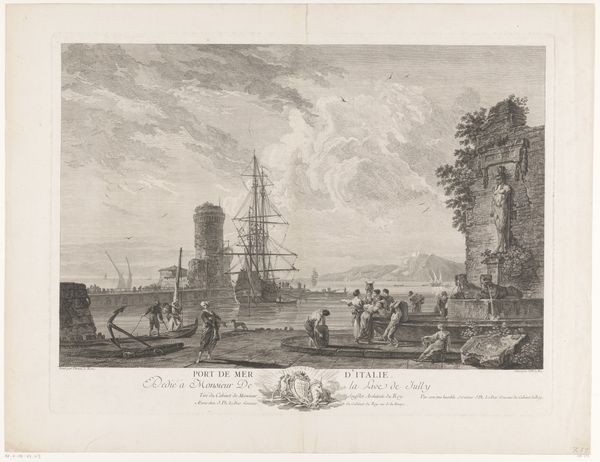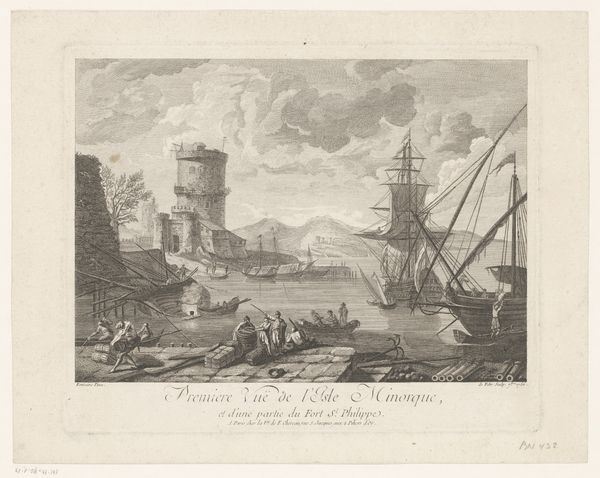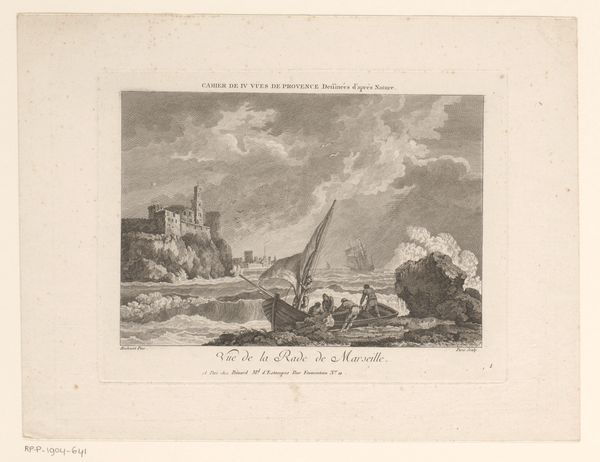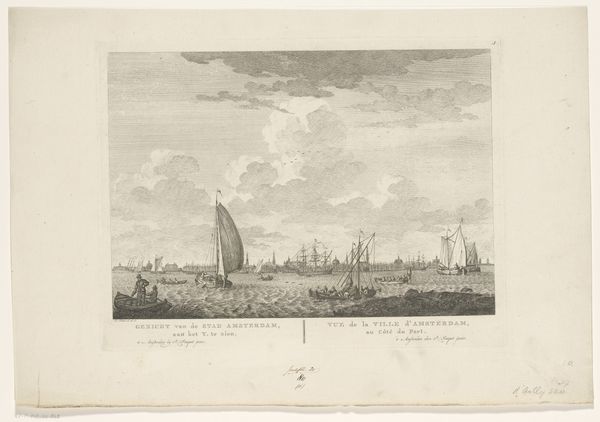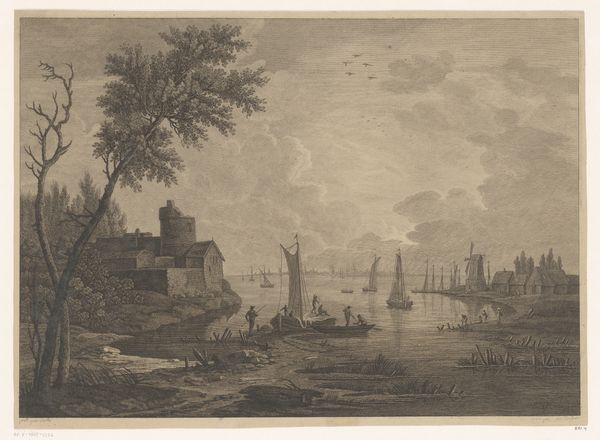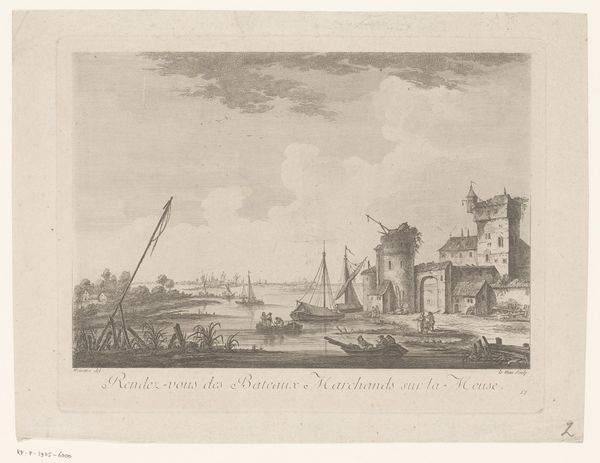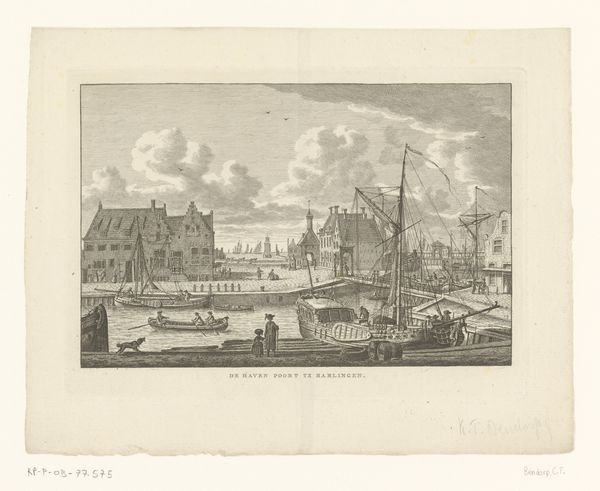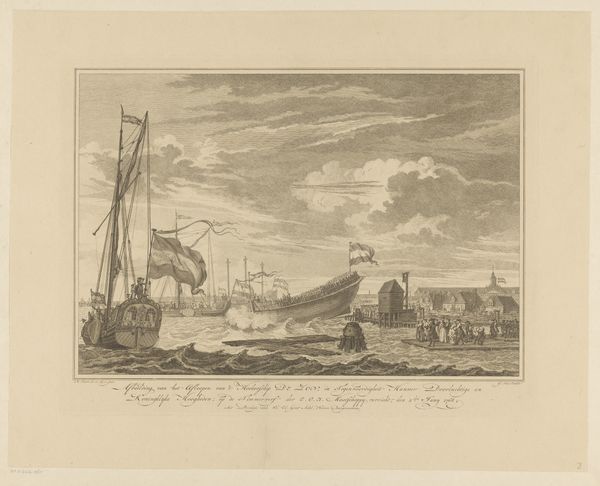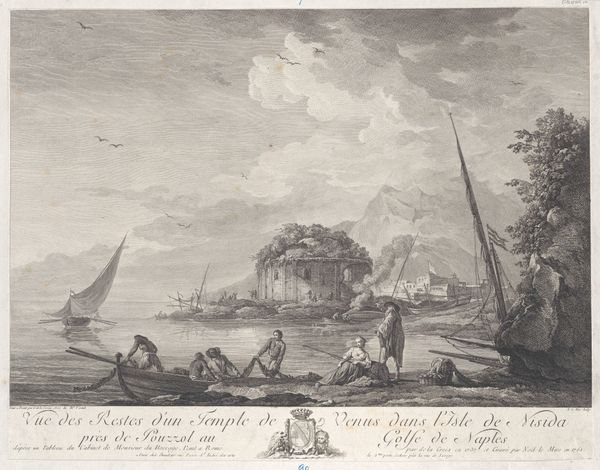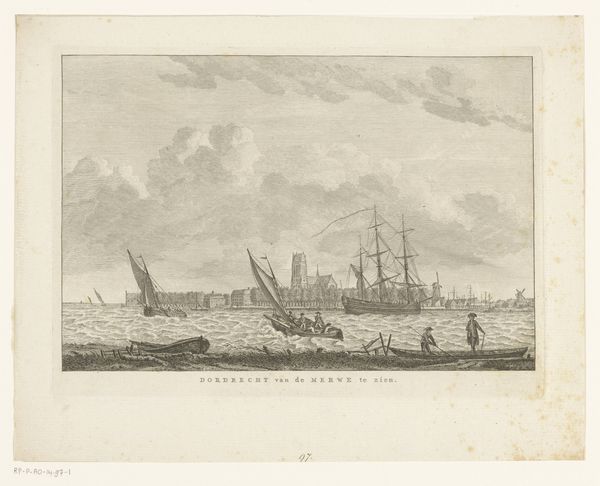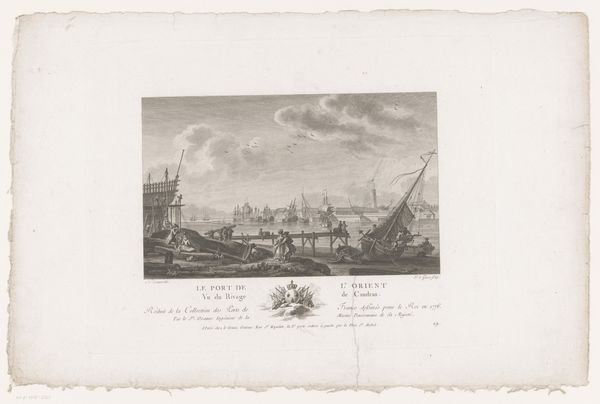
print, etching
#
baroque
# print
#
etching
#
landscape
#
cityscape
Dimensions: height 216 mm, width 268 mm
Copyright: Rijks Museum: Open Domain
Editor: We’re looking at "Gezicht op Maó in Minorca," an etching by A.J. Defehrt, from 1756. The neutral tones and precise lines give it a calm, almost documentary feel, but the large clouds and tiny figures hint at a bigger story. What do you see happening here in its historical context? Curator: This cityscape, rendered with the crisp detail characteristic of the era, offers more than just a visual record. Consider Minorca’s strategic importance in the 18th century—a naval prize fought over by European powers like Britain and France. Does the print reinforce power dynamics? Editor: So, you’re saying this isn't just a pretty picture; it has a political agenda? I mean, it’s like early propaganda? Curator: Potentially. Notice how the imposing architecture dominates the scene. That visual emphasis could function to convey strength and control, a silent declaration of dominance, particularly appealing to buyers with colonial interests. How do the figures within the landscape strike you? Editor: They seem like ordinary people, going about their day. Maybe that reinforces a sense of everyday life continuing under a new ruler? That everyday normalcy would serve as justification. Curator: Exactly. These images were carefully consumed. Prints like these circulated widely, shaping perceptions of distant lands and colonial holdings. Its accessibility turned this work of art into a tool, a medium to circulate ideology. Editor: That's fascinating. I had only seen a pretty picture, but it's more like a visual memo from that period, packed with messages. Curator: Precisely, and by considering these angles, we appreciate the power of art within a specific time.
Comments
No comments
Be the first to comment and join the conversation on the ultimate creative platform.
